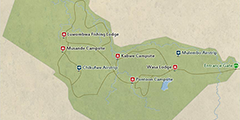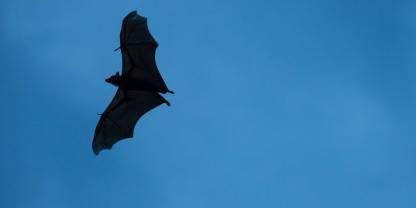Kasanka National Park is the only privately managed national park in the country. It is run by a charity, the Kasanka Trust, and all proceeds go back into conservation and the surrounding communities. Between October and December, it hosts an annual bat migration comprising up to 12 million individual fruit bats. Witnessing these large flocks silhouetted against the sunset sky is an image that will stay with you forever.

-
Best Time To Go
- October to December (Bat migration)
-
High Season
- October to December (The park gets busy)
-
Size
- 420km² / 160mi²
-
Altitude
-
1,173-1,267m /3,848-4,157ft
 View Photos
View Photos
 View Photos
+12
Photos
View Photos
+12
Photos
 Open Map
Open Map
Pros & Cons
- A chance to see up to 12 million fruit bats from October to December
- Great birding destination with many Zambian specials
- Wildlife hide overlooking a swamp providing a chance to see sitatunga
- All park proceeds go back into conservation and the community
- Walks, game drives, canoe and cycling trips offered
- Animals are skittish and limited variety of flagship species
- Off the beaten track and not easily combined with Zambia’s main attractions
Wildlife
Kasanka doesn’t have big wildlife densities, but there are some interesting species. Top of the list is the elusive sitatunga. This semi-aquatic antelope can be observed from Vivienne’s Hide, a platform overlooking the wetlands bordering the Kasanka River. Other mammals easily spotted are puku and Kinda baboons. Canoe into the wetland to look for crocodiles and possibly a playful otter showing off its acrobatic skills.
More about Kasanka’s wildlifeScenery
Although relatively small, the park has a good variety of habitats. Of major interest is the big swamp area that shelters the sitatunga. The rest of the park is a mosaic of grassland, miombo woodland and evergreen thickets. The rivers are fringed by forest.
Weather & Climate
It is hot and humid in the Wet season (November to April). Afternoon thunderstorms are common from December to April. During the Dry season (May to October), Kasanka has a lovely daytime temperature. But nighttime is chilly and you’ll need warm clothing for game drives.
More about the weather and climateBest Time To Visit
To witness the annual bat migration, you need to visit Kasanka between October and December. The bats arrive after the first rains, the timing of which varies from year to year. The bats don’t all come together; they arrive and leave gradually. November is usually your best bet to see big numbers. Otherwise Kasanka can be visited throughout the year, though it gets harder to move around the park from December onwards throughout the rains.
More about the best time to visit



